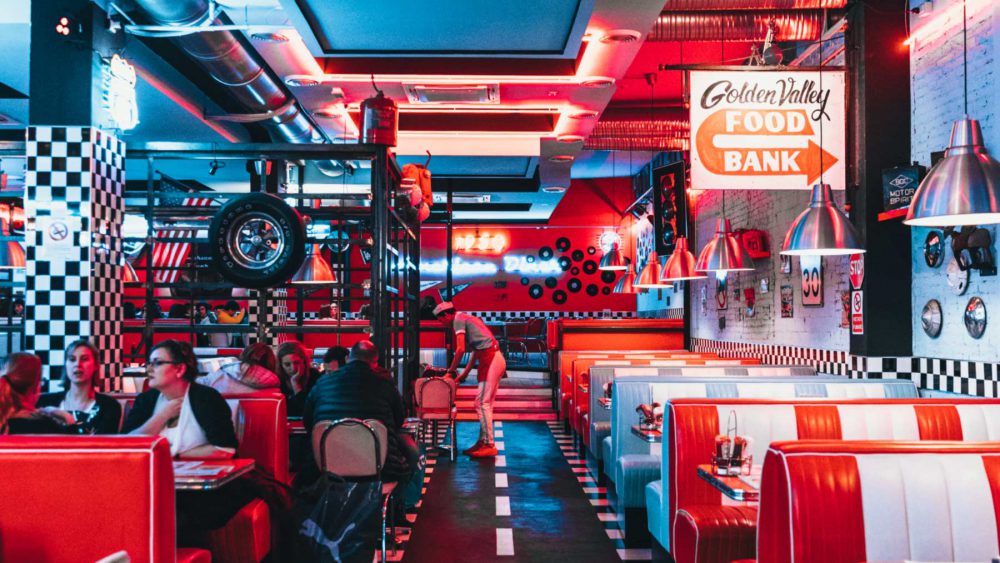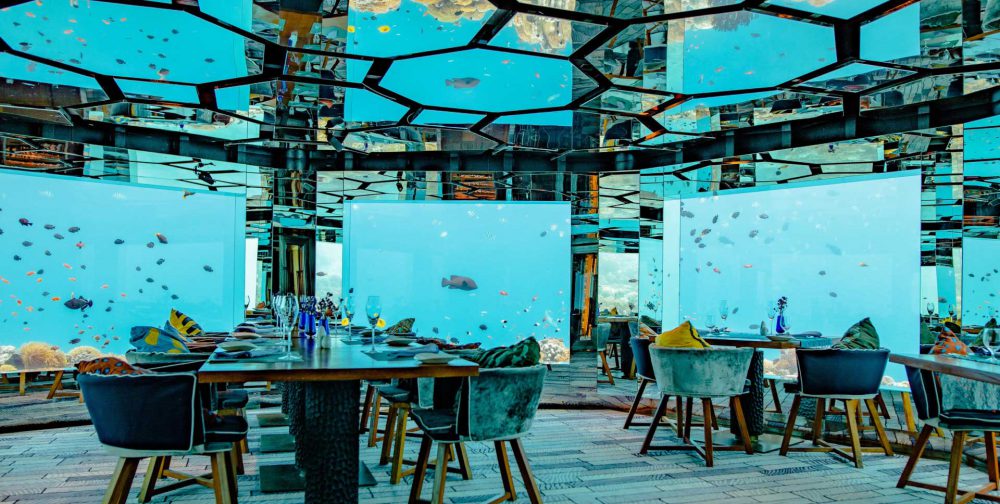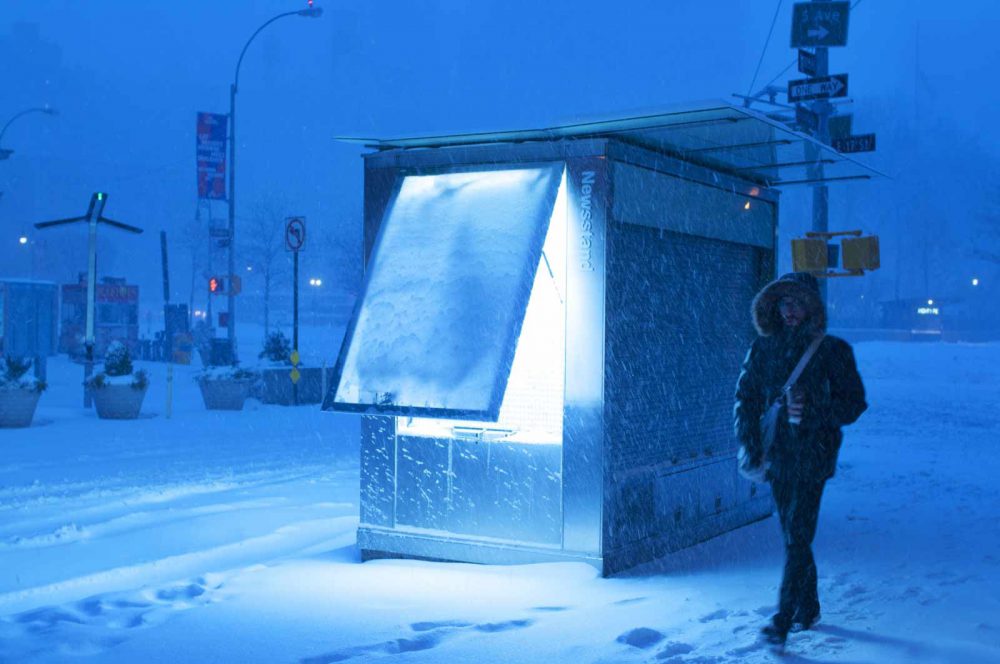Digital Marketing Checklist for Restaurant Owners
November 1, 2019
Jeremy Wells
Congratulations – you’ve decided to start your own restaurant. Now that you are a restaurant owner, it is important to put time and effort into your digital marketing for your restaurant, as this is a key component of customer acquisition for restaurants. Digital marketing for restaurants is complicated, but it is an essential component to your overall success, in addition to providing excellent food and service.
We’ve written this checklist as a jumping-off point, to help you start thinking through some of the elementary components of digital marketing for your restaurant. You’ve likely started to brainstorm on each of these as you began thinking about opening your restaurant, but this checklist will help you flush out each in more detail to set you up for success.
1. Develop a Strategy
It isn’t enough to simply have social media accounts, send emails, and build a website. There must be a strategy behind these components in order to make them effective. A marketing strategy typically contains your company’s value proposition, key messaging about your brand, data on your target audience, and any other high-level elements that make sense to include, such as how you expect your employees to treat your customers. We also highly recommend including a SWOT (Strengths, Weaknesses, Opportunities, and Threats) analysis to help you clearly see areas where you can focus your marketing strategy in order to build a competitive advantage.
Once you’ve thought about your strategy, it is time to write it down. This is critical to get everyone on your team on the same page, as well as help you check in with yourself periodically regarding the strategy you’ve created. Once you’ve written your strategy, remember it is not set in stone. It can be readjusted and reevaluated as time passes and your business needs change.
A marketing strategy is critical because it connects all of the components of your marketing and keeps them in alignment.
A marketing strategy is critical because it connects all of the components of your marketing and keeps them in alignment. It is also a fundamental part of building a winning marketing strategy that will help you stand out against your competitors.
2. Understand How Much a Customer is Worth
Once you have a strategy in place, it can seem like the next logical step is to start choosing channels and launching all of your marketing efforts. However, before you start investing time and resources into specific marketing initiatives, you need to have a clear understanding of how much each customer is worth. This will help you have a very clear understanding of which marketing efforts make sense for your business and customer acquisition – and which ones don’t.
There are already thin margins within the hospitality industry, and many hospitality ventures fail. If you are offering a discount or promotion to customers to bring them in, and also losing a significant amount of profit from each customer due to overall marketing costs, you might not be getting anything, and that is obviously not sustainable for any business, but especially a new business.
Therefore, it is important to calculate how much profit your business generally receives from each customer. Then, you’ll need to figure up how much of that revenue you want to invest in your marketing efforts. One of the best parts of digital marketing instead of traditional marketing is that you can typically track how much you are spending per lead or per purchase, and have a very clear indication if something is working or not. If a margin for a particular channel is too high, it is also fairly easy to turn off that channel to avoid spending too much. You also have a lot of opportunities to test in digital marketing, which does not exist in traditional marketing.
3. Invest in Brand Identity
Now that you have a good indication of how much you can reasonably spend on marketing, the next steps are to invest in your brand identity. You will use the components of your brand identity to build all of your other marketing components, so it’s important to invest a good amount of your budget in this arena.
Restaurant branding is essential because it helps customers identify the type of restaurant that you are. It also helps you distinguish your restaurant from its competitors, and is a tool to help keep you in mind so that customers return.
Your restaurant’s brand identity includes your logo, your website, your interior and exterior designs, your signs and your menu design. This is one area that many restaurant owners outsource, especially in the beginning, so that they can be sure they are starting out as competitively as possible. Because your brand identity will be the foundation for all of your marketing, it is not something to take lightly or rush through.
Because your brand identity will be the foundation for all of your marketing, it is not something to take lightly or rush through.
Take a look at other similar businesses for inspiration on your own brand identity. This can also help you make sure that your brand identity ideas are aligning with your overall restaurant concept and the market you are entering.
4. Procure Photography
We eat with our eyes first. As a restaurant owner, you know your food’s presentation has to look good. But this concept actually starts well before your customer’s orders. In your advertising, on your website, on your social media channels, and anywhere else your potential customers interact with your brand – they will expect to see pictures of your food.
Just like the other components of your brand identity, you will want to make sure you invest in your photography. You will want to hire someone who specializes in food photography for restaurants, as it is considerably different than other types of photography. Depending on your budget, you may also consider hiring someone who is familiar with food staging for the photoshoot.
You’ll want to get pictures of multiple dishes – ideally, everything on your menu. Even if you do not have plans to use an item in your promotions right away, that may change later on and it will be much easier if you already have these photos ready to go.
In addition to the menu, you’ll also want to have plenty of pictures of the inside and outside of your restaurant.
5. Launch Your Website
Once you have your overall strategy, brand identity, and some amazing photography, you’re ready to dive into digital marketing efforts. The first major component of your digital marketing mix is your website. Most of your other efforts will connect to your website, and it will be the hub potential customers use to find out the answers to their questions and determine whether or not they will go to your business.
For restaurants, it is critical that your website is mobile-friendly. Most people who are researching where to eat are doing so on-the-go. If your website doesn’t load well or is not easy to navigate, you will lose potential customers.
For restaurants, it is critical that your website is mobile-friendly.
You’ll also want to make sure your website contains many great photos as well as your menu. Answering potential questions is also very important for your site. Your restaurant’s location, hours, and prices are all common inquiries your guests might have before deciding to come to your restaurant.
Depending on your type of restaurant, you may want to include information about whether or not you accept reservations and if private spaces are available for parties or groups. Think about the questions you typically have before visiting a new restaurant, and ask friends and acquaintances what they would want to know in advance – and put all of it on your website, in an easy-to-navigate format. You can also browse other restaurant websites to see what information they include and add anything to your own website that you might have missed.
6. Claim Social Media Channels
Once your website is set up, it is time to claim your social media accounts. Even if you do not plan to be incredibly active on a particular channel, you’ll want to set up an account so that you can be aware of any conversations happening about your business on that channel and also to avoid someone else taking an account you might want later.
The most popular channels for restaurants include Facebook, Pinterest, and Instagram. Depending on your target demographic, you might also consider platforms like Snapchat or Twitter.
Again, you’ll want to set up these accounts on each channel, but then you will choose which channels make the most sense to update regularly in alignment with your overall strategy. There are multiple social media management tools that can help you manage multiple channels at once, and even schedule social media posts in advance.
Your food photography investment will be critical on social media – especially the more visually-focused platforms like Pinterest and Instagram.
7. Optimize Local SEO and Online Listings
Similar to social media, you’ll want to claim your restaurant, or add it, to any online listing platforms. One of the most important is Google My Business. This is the listing that pops up to the right when searching for a particular business. It includes information like your hours, what you serve, where your restaurant is located, and what the price point is.
This is a very attractive search placement for a business, and should not be ignored. It is very straightforward to create or claim a listing. Then simply follow Google’s prompts to ensure everything is filled out properly.
You can also add pictures of your restaurant to these listings to attract more attention and to give anyone searching a better idea of what to expect from your restaurant.
Additionally, it is important to optimize your website and social media channels for Local SEO. While that sounds like it could be a complex process – it is actually straightforward. It simply means including your location (City, State) in multiple places on your website and tagging the location on your social media channels. This will ensure your restaurant is included when people search for things like “restaurants in Miami, Florida.”
8. Prepare for Reviews – Good and Bad
When claiming online listings, you should also take management of your business on review sites such as Yelp, TripAdvisor, and UrbanSpoon. If your business has not yet received any reviews and hasn’t been added to that website, you can add it yourself to encourage customers to start leaving feedback. Taking ownership of your business on these sites will allow you to add any information that may be missing, correct anything that isn’t right, and respond to any new reviews you receive.
And you should plan to respond to all of the reviews your restaurant receives. Being responsive to positive and negative reviews is one way to attract additional reviews. It is also a way to get in touch with customers who may have had a bad experience but were not able to adequately communicate that while they visited the restaurant.
Many restaurant owners are nervous about online reviews. They worry that unhappy customers may trash their business and keep new customers away. They are concerned that competing businesses will create “fake” negative reviews in order to damage their reputation. And they worry that satisfied customers may create negative reviews in order to take advantage of their business. While all of these concerns are valid and do occasionally happen – it is far more likely that they won’t.
You should develop a strategy to handle any reviews – especially the negative ones. We recommend that restaurant owners simply ask a negative reviewer to reach out to a specific phone number or email address to resolve the problem. If the person reaches out, try to make it up to them in a way that makes sense. “Fake” reviewers will likely not reach out to you directly, but you will appear to third-parties that you have made an effort to make things right – which is crucial in the hospitality industry.
Some restaurant owners fear that they will have trouble responding to reviews without being defensive. In these situations, it can be a good idea to assign review management to a marketing person or a manager. Provide the person who is responding to reviews with clear guidelines on how to handle specific situations, and then stay off the review sites!
9. Advertise Your Business
Once your website and social media channels are set up, it is time to start advertising your business. This is one place where it is absolutely critical that you understand the value of your customer. Social media advertising as well as paid search advertising, for example, will provide you with a very clear cost per lead metric. You’ll want to make sure that the cost per lead is appropriate for the overall value of the customer.
There are dozens of advertising options to consider, but for restaurants, we highly recommend Google Search and Facebook. For Google Search, you’ll want to make sure you appear at the top when people are searching for restaurants near your location. Facebook advertising has a lot of options that allow you to provide a notification when someone is near your business. You can also target people who live near your business in a highly-specific way, which makes Facebook a great platform for restaurant marketing.
It is critical that you test different ads
Once you set up advertising, it is critical that you test different ads. Test different pictures, ad types, copy, offers, and platforms. Discover what works well for your business and what doesn’t.
10. Consider Messenger Marketing
Facebook Messenger Marketing is one of the newer paid social media channels restaurant marketers are attempting to capitalize on. Working with a restaurant marketing agency (Such as Promotable Media) is a great way to leverage this tool and get more customers in your seats. Messenger marketing is engaging on a highly-personalized level, making it one of the more effective channels, when used properly. There are multiple ways a restaurant can approach marketing through Messenger, but some of the more common include:
- Showcasing your menu
- Taking reservations
- Loyalty programs
- Offering discounts for birthdays or anniversaries
Depending on the goal you want to accomplish and your type of restaurant, you may want to invest in a Chatbot that can handle a majority of the inquiries and conversations for you.
Because Facebook Messenger Marketing is relatively new, there is a lot of areas to capitalize on for relatively low cost. It is definitely a channel restaurant marketers should be considering.
Additionally, there are a lot of other digital marketing efforts restaurant owners can take advantage of once they have tackled the basic concepts on this list. For example, there are delivery partnerships that can help restaurants get in front of new and younger audiences, depending on the type of restaurant and the target market. There are also other types of digital advertising to consider such as Instagram or Google Display. Restaurant owners can also set up remarketing efforts to encourage customer loyalty which includes combinations of social media marketing and email marketing efforts.
Hopefully, this checklist has provided you with a starting point for your digital marketing efforts. Marketing strategy involves a lot of components, which is why so many restaurant owners often choose to invest in a restaurant marketing consultant or restaurant marketing agency. It can be overwhelming, especially if you are just starting out in the restaurant industry or as a business owner. Even if you have managed the basic components on this list on your own, advancing to the next level and knowing how to achieve growth through digital marketing channels is another challenge that can be difficult for even the most seasoned restaurant owners.
Take your digital marketing efforts one-at-a-time, and stick to your foundational strategy. If you do need help, guidance, or support along the way, reach out to a restaurant marketing professional who can help.
Jeremy Wells
Partner at Longitude°
Jeremy is the author of Future Hospitality and Brand Strategist at Longitude°. As a member of the Education Committee for The Boutique & Lifestyle Leaders Association (BLLA) and a content contributor to Cornell University’s Hospitality Vision and Concept Design graduate program, he is a committed thought leader in hotel branding, concepting, and experience strategy.






